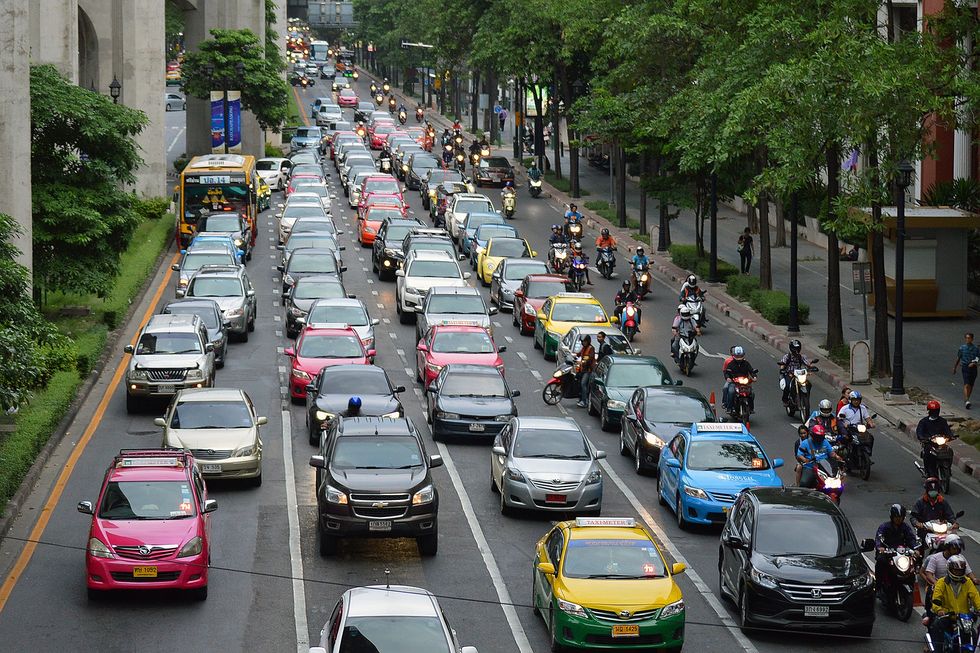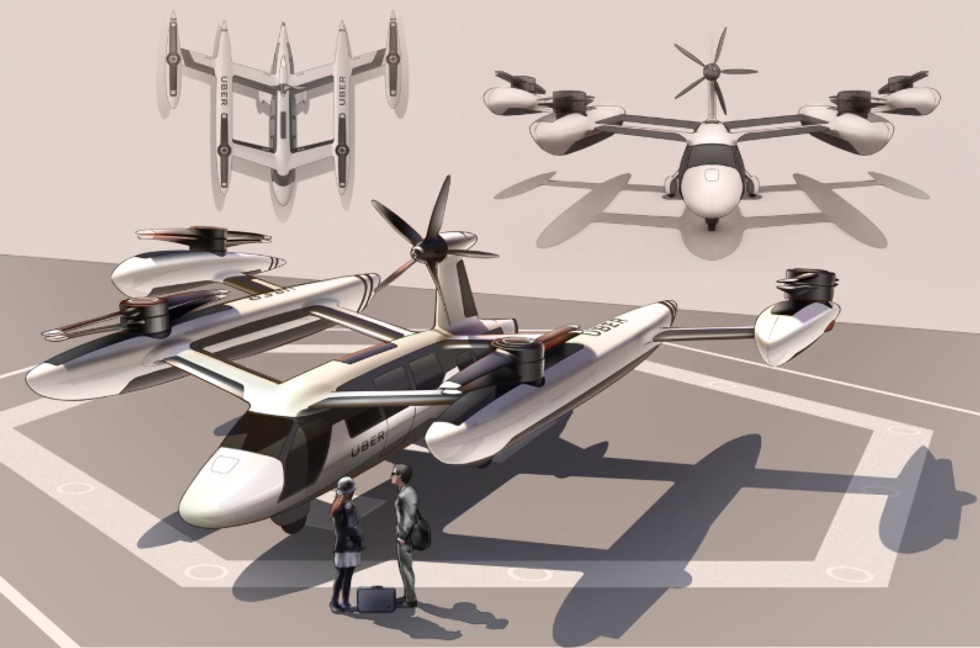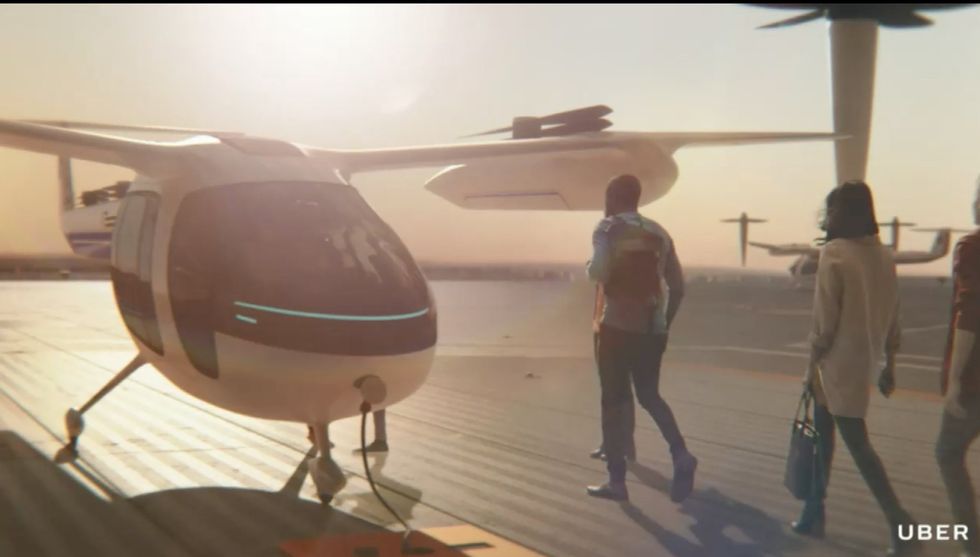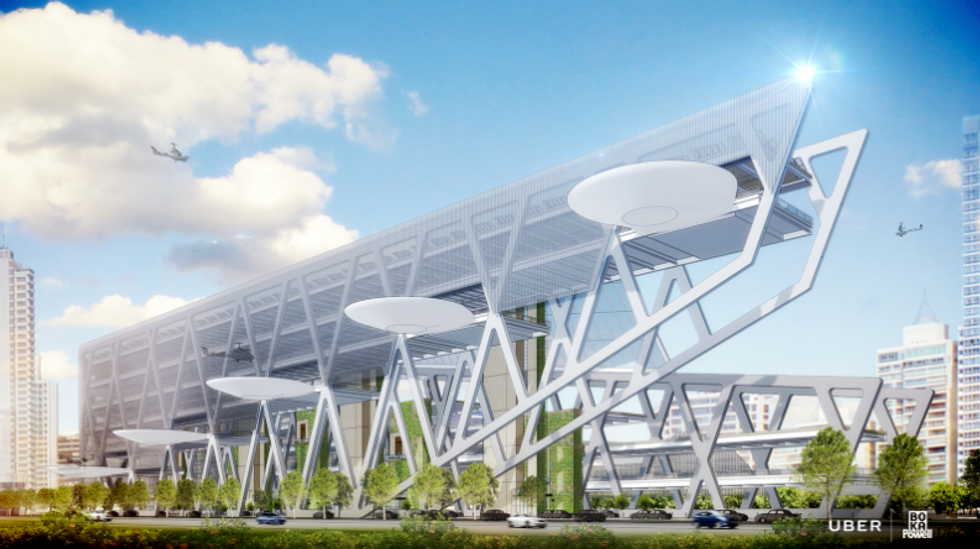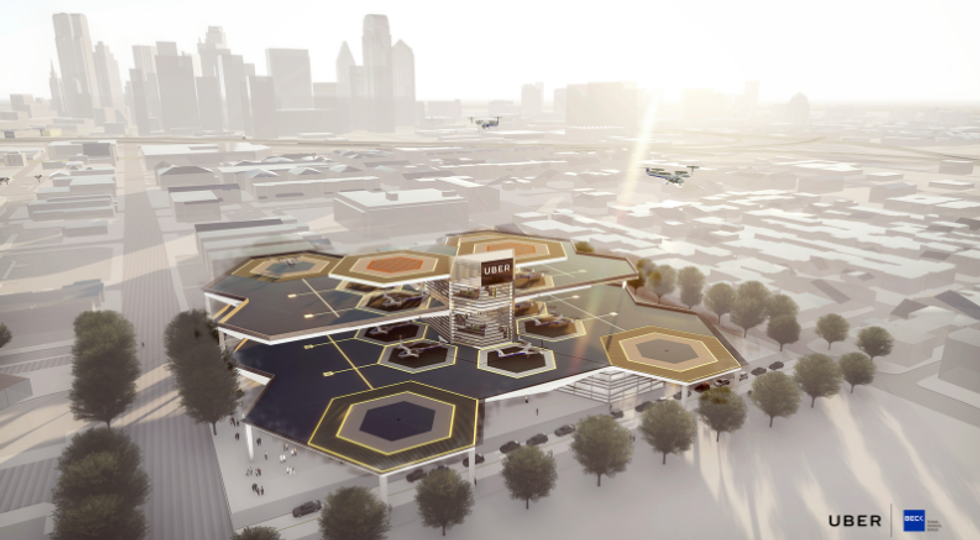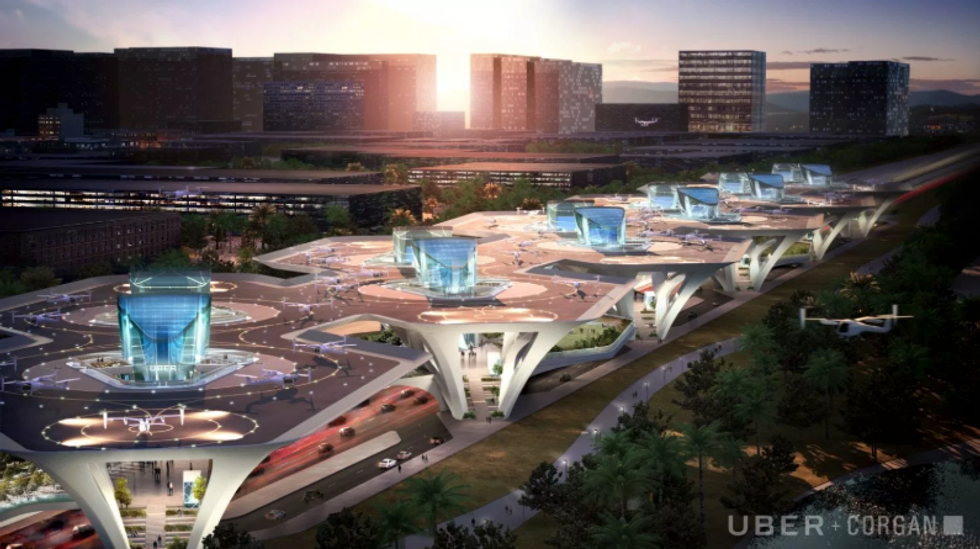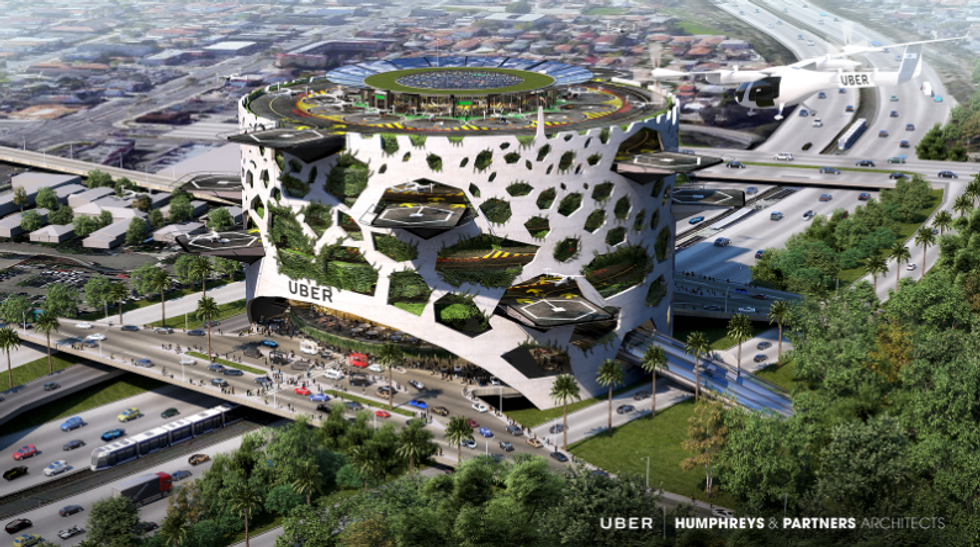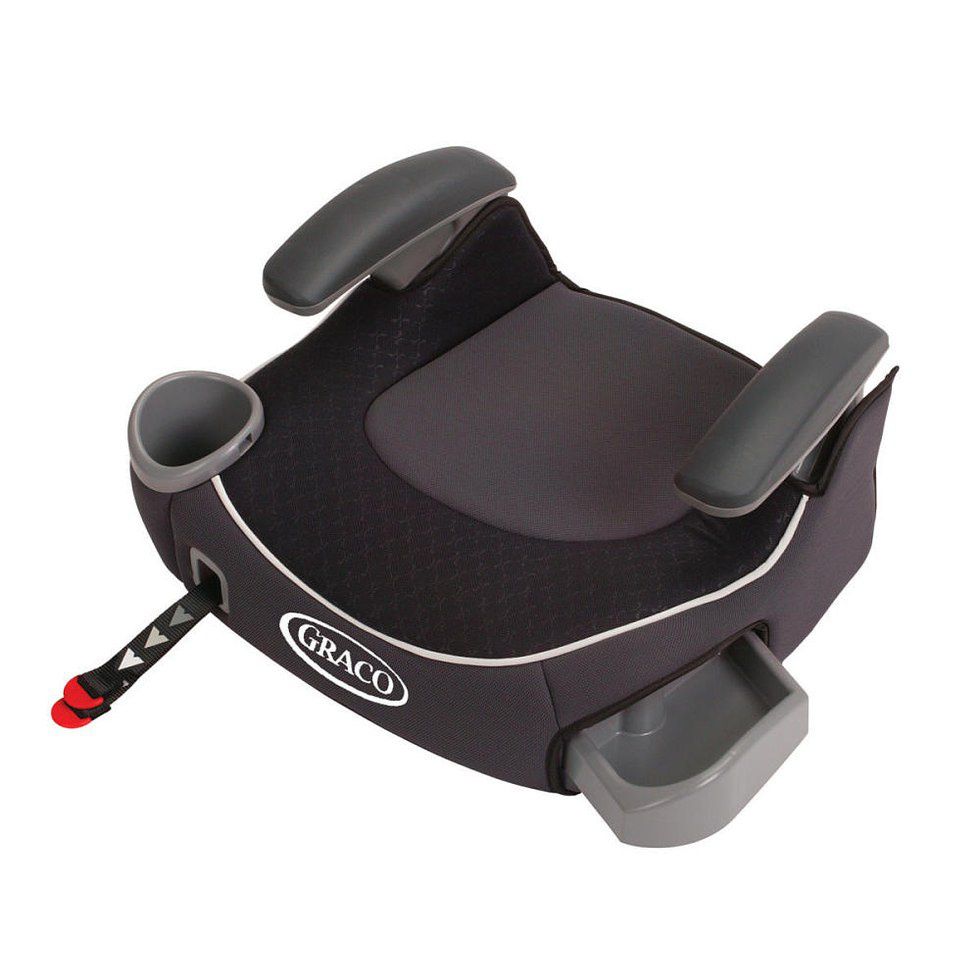When you think of an Uber, you think of a friendly stranger who drives you from point A to point B, right? Have you ever wondered whether you could upgrade your ride-share experience? And by that, I'm not just talking about leather seats.
It's 5:15 p.m. and you just dropped off your car at the mechanic to get something fixed. You're tired and all you want to do is be at home relaxing, watching some Black Mirror on Netflix and eating dinner. Instead, you're waiting for your Uber that is about to have you sitting in rush hour traffic.
What if you could skip the rush hour traffic? More specifically, what if you could physically skip over it? Well, that dream just might become your reality.
Uber is teaming up with NASA and The U.S. Army to research and develop the possibility of an "aviation rideshare network" or essentially flying cars that take you to your destinations. Uber hopes to roll out this new service by 2023, giving them a few years to conduct research and simulations to see if this type of service can actually work.
Announcing the signed agreements with NASA and The U.S. Army at the Uber Elevate Summit 2018, the ridesharing company has introduced its plans to pioneer the future of urban transport.
1. NASA.
Uber is pulling out all the stops to make their future service, UberAIR a possibility, and NASA is excited to help them make it happen. NASA will soon begin testing the air-taxi concept in Dallas with a goal of conducting flight demonstrations in 2020. The service is scheduled to be available by 2023 with Los Angeles, CA and Dallas, TX as the first two cities UberAIR will operate in.
Helping Uber "ensure a safe and efficient system for future air transportation in populated areas," NASA will identify the main challenges of the "urban air mobility market." Over the next few years, NASA will research these issues, analyze testing requirements and develop strategies to combat the obstacles in Uber's way.
2. The U.S. Army.
Uber and U.S Army Research, Development and Engineering Command, Army Research Lab (RDECOM ARL) have announced a Cooperative Research and Development Agreement (CRADA) to start testing the vehicles used in their upcoming UberAIR service.
Uber has also signed a joint work statement with RDECOM ARL to share the expense of rotor technology research, which is required to develop propellers suitable for the flying crafts Uber wants to bring to market.
Head of Uber Elevate, Eric Allison, mentions that the jointly-funded project will help Uber develop groundbreaking rotor technology that will let us enjoy quieter travel.
How quiet is quiet when it comes to flying cars and their rotors (propellers)? Stay tuned for updates from Uber to find out.
3. The Concepts (No, Sadly They're Not Real).
As soon as the news broke, architects were quick to the scene with their futuristic mock-ups of what UberAIR skyports could look like. Some appear more realistic than others, but I'm hoping they all happen.
This one is my favorite. It's bold, dramatic and seems like a design adequate enough to commence the next generation of city transportation. Some say it looks like two knife blades piercing the sky. Others say it looks like a couple of sharp hand saws. Whatever this mock-up looks like to you, it's stunning and deserves a home in one our major cities.
Some of the mock-ups take a more practical and possibly cost-effective approach. This glorified helicopter pad seems like something we can expect in a few years.
The examples above and below this text show how skyports can be built around major roadways without affecting any current infrastructure. The sky is the limit when it comes to the design so I am excited to see which ones we will get to see in person.
Smartphones have revolutionized how we communicate, fundamentally changing our lifestyles. Isn't it time to revolutionize how we travel in our cities? I've never met someone who genuinely likes sitting in rush hour traffic. Is UberAIR the upgrade we've all been waiting for? Time will tell.

